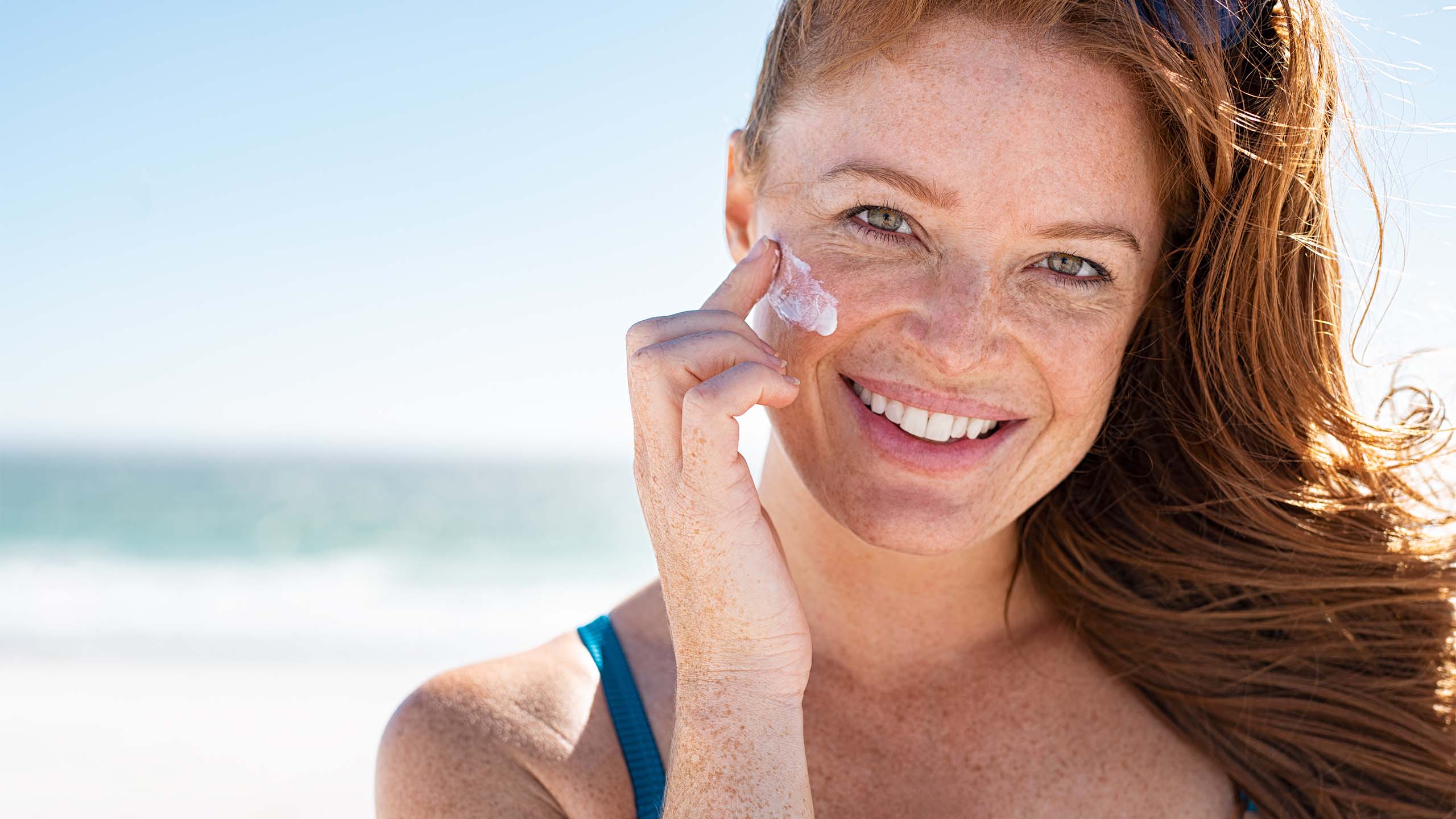For most people, the thought of summer and the sun brings up excitement surrounding beach days, outdoor picnics, warm-weather hikes, and so much more.
However, when you suffer from rosacea, spending time outdoors in the summer enjoying the sun can be incredibly difficult.
While there’s no easy fix for everyone, there are things you can do to reduce your symptoms and discomfort associated with rosacea and sun.
How Does Sun Exposure Affect Rosacea?
If you’ve ever wondered what to avoid with rosacea, the sun tends to be at the top of the list.
Everyone experiences rosacea differently, and no one has the same reactions to rosacea triggers. However, 61% of rosacea sufferers rank sun exposure as their biggest trigger.
UV rays from the sun cause the growth of new blood vessels. This growth then increases facial redness and flushing severity.
Other factors also contribute to increased rosacea symptoms in the sun, including a rise in body temperature as well as physical exertion while outdoors.
How to Enjoy the Summer and Avoid Rosacea Flare-Ups
No one should have to stay inside all summer! If you want to go outside and enjoy the weather, there are options to make your rosacea more bearable in the summer heat.
Stay in the Shade
One of the easiest ways to enjoy the outdoors while avoiding the skin-irritating effects of the sun is the stay in the shade. You can either stay beneath the natural shade of the trees or create your own shade with a tent, umbrella, or wide-brimmed hat.
By staying in the shade and avoiding direct UV rays, you’ll keep your body temperature cooler and keep the sun directly off the skin, making rosacea flares less likely.
Apply Sunscreen
When you suffer from rosacea, it’s important to always apply sunscreen before spending time outside.
Sunscreen is important for avoiding rosacea flare-ups in the sun even if you don’t plan on being out for a long period of time — and even if it’s an overcast day. Did you know you’re still being exposed to UV rays through the cloud coverage? It’s true!
Even if you’re not planning on going outside, UV rays can still affect your skin through windows and other openings, so it’s best to simply make sunscreen a part of your daily skincare routine.
However, choose your sunscreen wisely. It’s important to read the ingredients label on your sunscreen, because the chemicals typically used can be irritating for red, sensitive skin.
The best sunscreen for rosacea is often made with zinc oxide and/or titanium dioxide, because these are less likely to irritate the skin. Avoid chemicals like oxybenzone, avobenzone, octisalate, octocrylene, homosalate, octinoxate, and fragrances.
Reapply your sunscreen every two hours while outside — and more often if you’re in water. For the best protection, opt for SPF 30+.
Avoid Going Outside Midday
The sun is highest in the sky between the hours of 10am and 2pm. That also means it’s the strongest and most hazardous for your skin at that time.
If possible, avoid going outside during this time of day. And if you absolutely have to, be extra careful about finding shade, staying hydrated, reapplying sunscreen, and covering your skin.
Stay Cool with Water or a Fan
It’s not just exposure to UV rays that can irritate the skin. The sun’s ability to increase your body temperature can also trigger rosacea. An increased body temperature increases blood vessel dilation and can trigger inflammation and rosacea.
To help regulate your body temperature and stay cool, drink plenty of cold water while outside in warm weather. You can also spritz yourself with a spray bottle filled with cold water or use a fan to keep your body temperature down.
Use Rosacea-Friendly Makeup
Applying makeup before going out into the sun can add an additional layer of protection to your facial skin on top of applying sunscreen. In fact, some makeup even contains SPF.
To avoid irritation from your makeup, look for hypoallergenic, non-acnegenic, and fragrance-free products that don’t contain parabens, sulfates, alcohol, or preservatives.
Try Gladskin Redness Relief Cream
Avoiding triggers like the sun helps you avoid rosacea flare-ups. However, balancing your skin microbiome helps you strengthen your skin to better deal with rosacea triggers.
If you’re regularly dealing with rosacea, there’s a good chance your skin microbiome is out of whack.
Fortunately, you can rebalance your skin’s microbiome. While this may sound complicated, you just need to choose a product that works with your skin’s natural defenses to return your skin to a balanced state.
Gladskin Redness Relief Cream defends against redness-causing bacteria and creates a healthy environment for good bacteria to thrive, leaving little room for bad bacteria to take over!
While Gladskin works in harmony with your skin to bring balance back to your microbiome, it also moisturizes! Replenishing your skin’s natural moisture and keeping dryness at bay helps protect your natural skin barrier.
And since it’s formulated without harsh ingredients and safe for sensitive skin, you don’t have to worry about it causing flare-ups.
Consult with Your Dermatologist
Rosacea and sun exposure go hand-in-hand for 61% of rosacea sufferers. But, there are several possible rosacea triggers and many treatment options available. To best understand your skin condition as well as how to manage and avoid flare-ups, consult with your dermatologist.
Alongside a healthcare professional, you’ll be able to create a plan to make your skin more comfortable not only in the warm summer months, but year-round.

